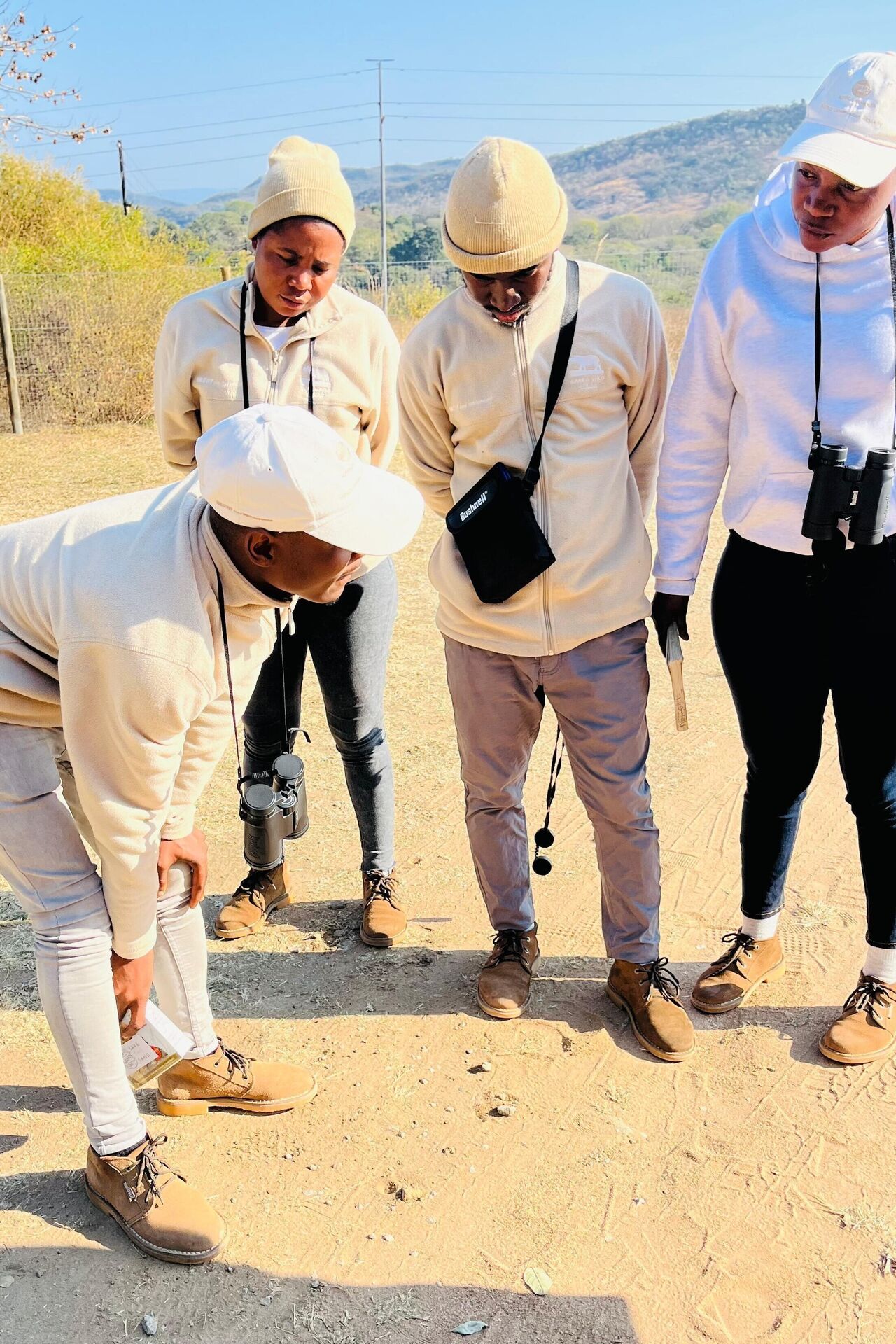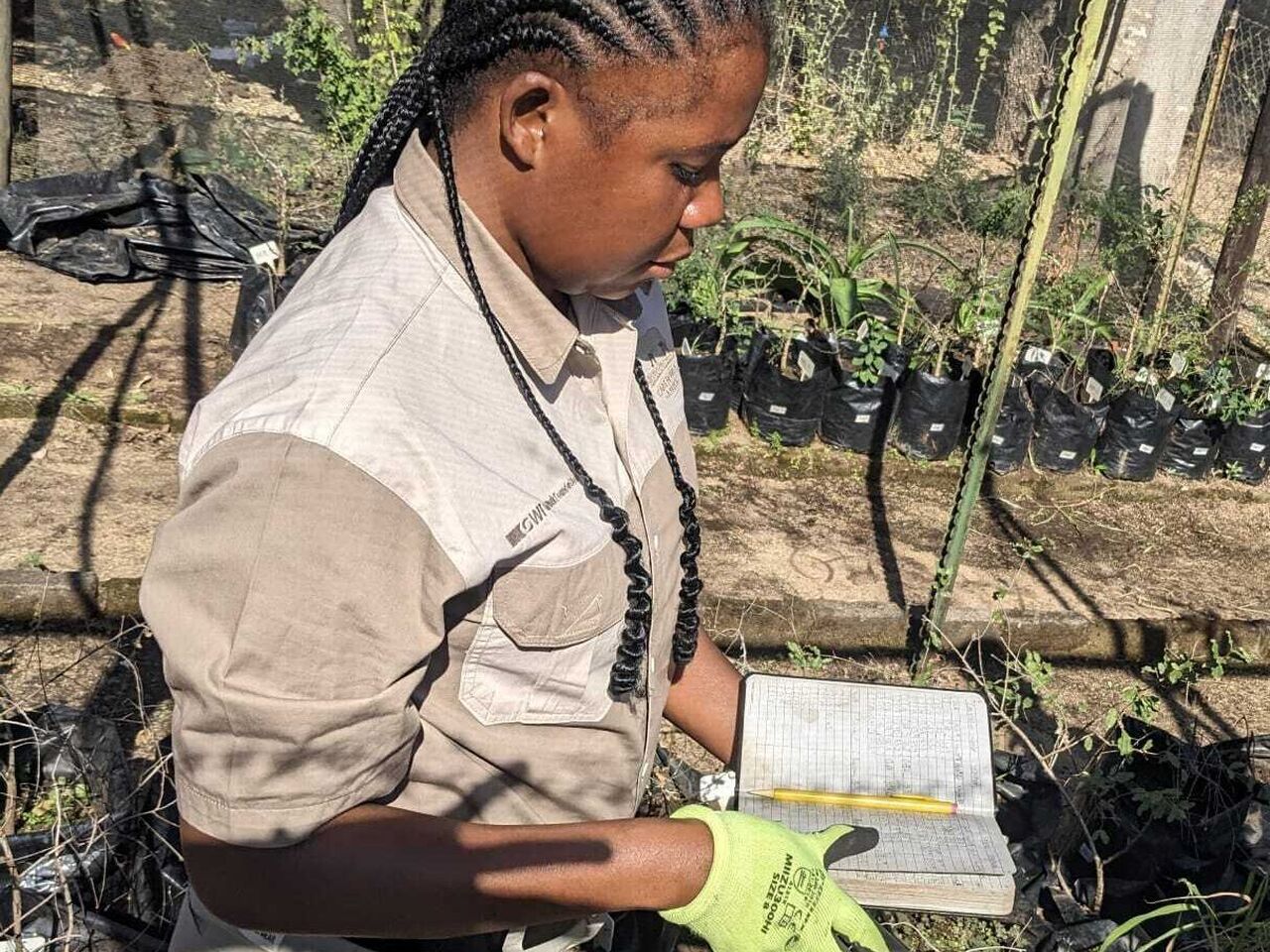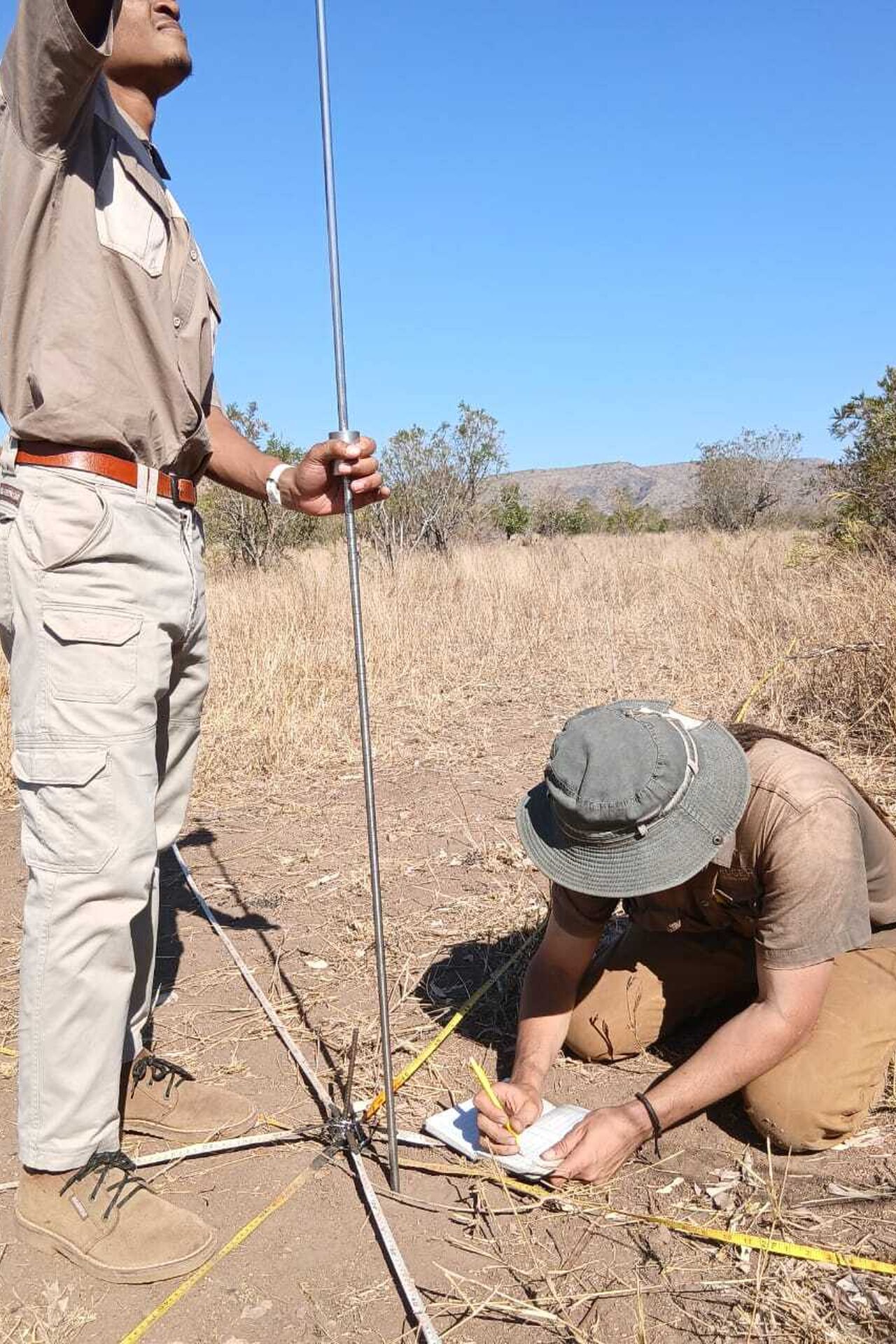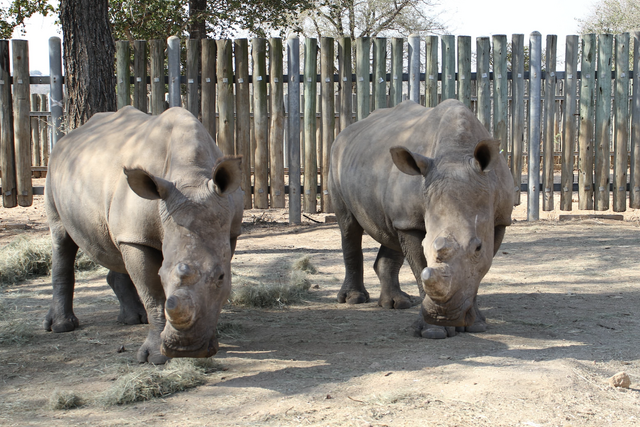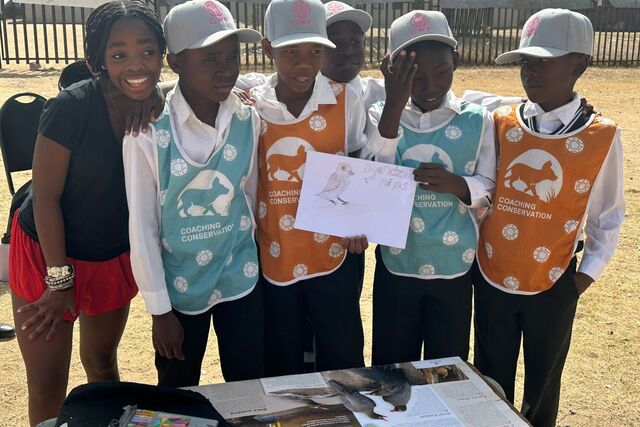GWF participates in study on the hidden impact of elephant carcasses on the savannah
Good Work Foundation’s Conservation Academy recently joined a groundbreaking SANParks research project to investigate what happens to the land when an elephant dies – the effect these gentle giants have on their environment long after they are gone.
The Elephant Megacarcass research project, which ran from late June to late July 2025, involved a mix of GWF’s Conservation Academy students, university students, SANParks research assistants and game rangers.
We are grateful to writer and ecologist Ryan Helcoski for involving GWF in this vital research project. Ryan is currently pursuing his PhD at Utah State University, working with an international team to study the impacts of terrestrial megacarcasses in South Africa.
“The aim of the project was to understand how a decaying elephant carcass affects the soil, vegetation and biodiversity in the surrounding area,” says Sibusiso Mnisi, the academy’s manager.
“This was the first time the Conservation Academy has been involved in something as special as this. It was an exciting opportunity for our students to be part of hands-on conservation science happening inside the Kruger National Park.”
Hands-on conservation research
Working in teams of up to three students at a time, the group collected data from an elephant carcass site and control sites 15m away from the carcass. Their responsibilities included:
– Measuring how compacted the soil was at the carcass site versus further away
– Identifying and recording grass and seedling species
– Measuring and weighing bones left behind
– Assessing how the site is changing over time
“It was a lot of walking, observation and hands-on work,” Sibusiso says. “But it gave our students good exposure to professional field research.”
Preliminary results confirmed that carcasses significantly contribute to soil fertility, especially in clay-rich soils, and encourage the growth of a diverse range of plant species.
However, much remains to be analysed from the carcass site, where the elephant passed away a little over a year ago. All the findings will be compiled into a research paper and a book, with the Conservation Academy recognised as a contributing partner.
Contributing to a global knowledge base
“The findings on the ecological footprint of our elephants might end up even influencing future wildlife management strategies,” says Sibusiso. “And our students are very proud to be a part of that – they contributed to knowledge that can change how communities see conservation and the role wildlife plays in our environment.”
Sibusiso also hopes this is just the beginning of the Conservation Academy’s involvement in large-scale research. “Projects like this bring learning to life,” he says. “They give our students and our community a deeper respect for the complexity of nature and the importance of protecting it.”
